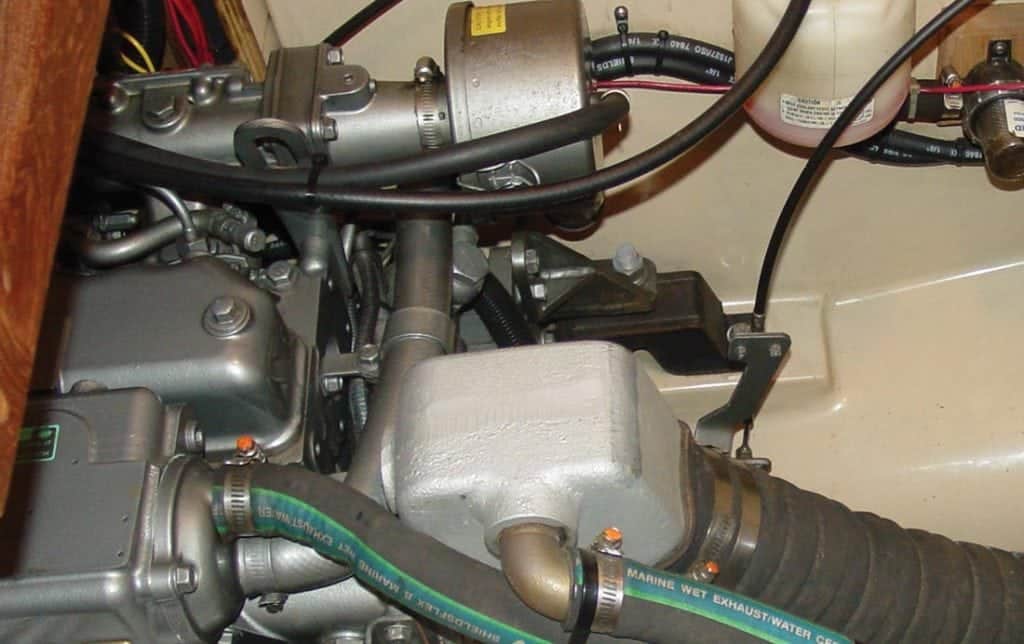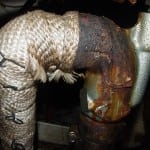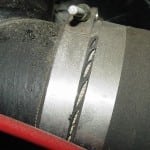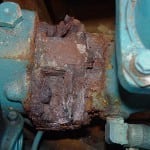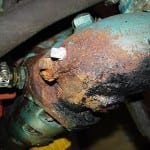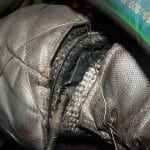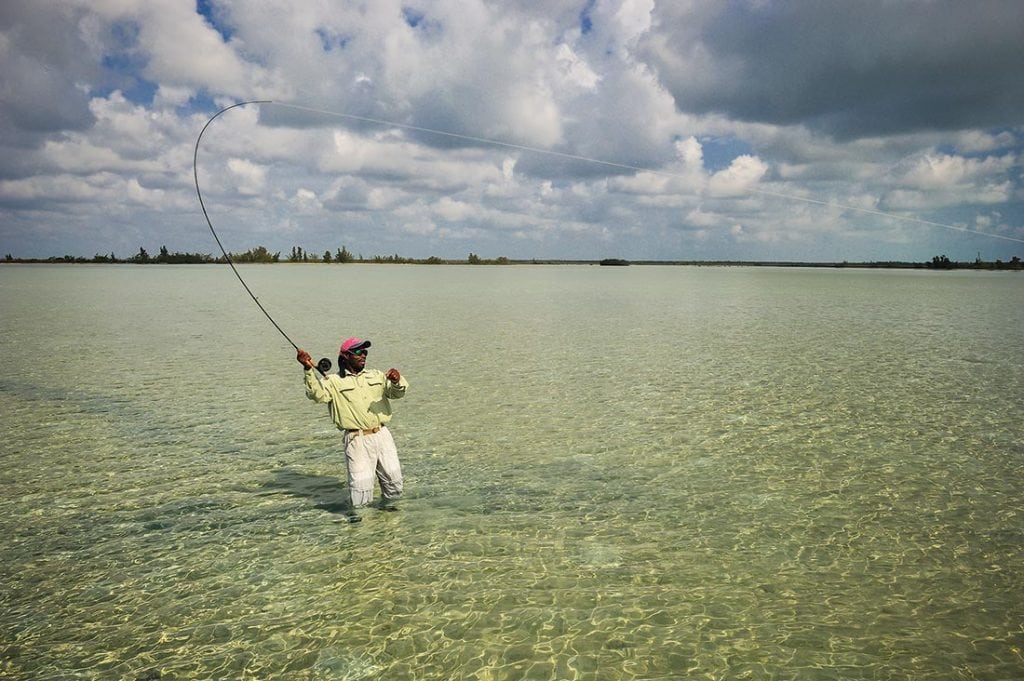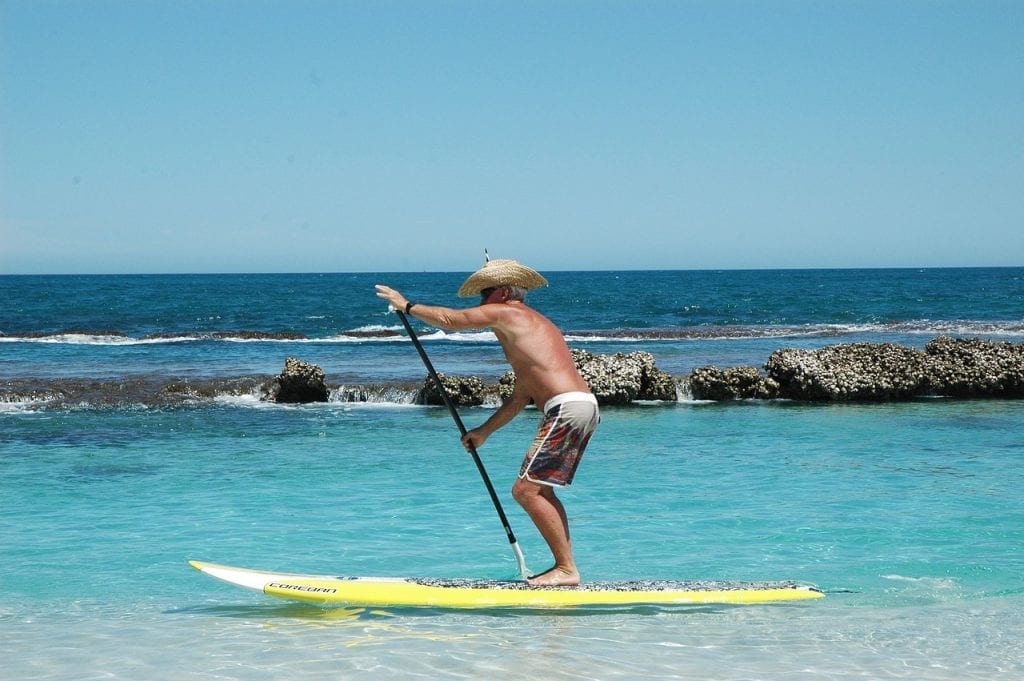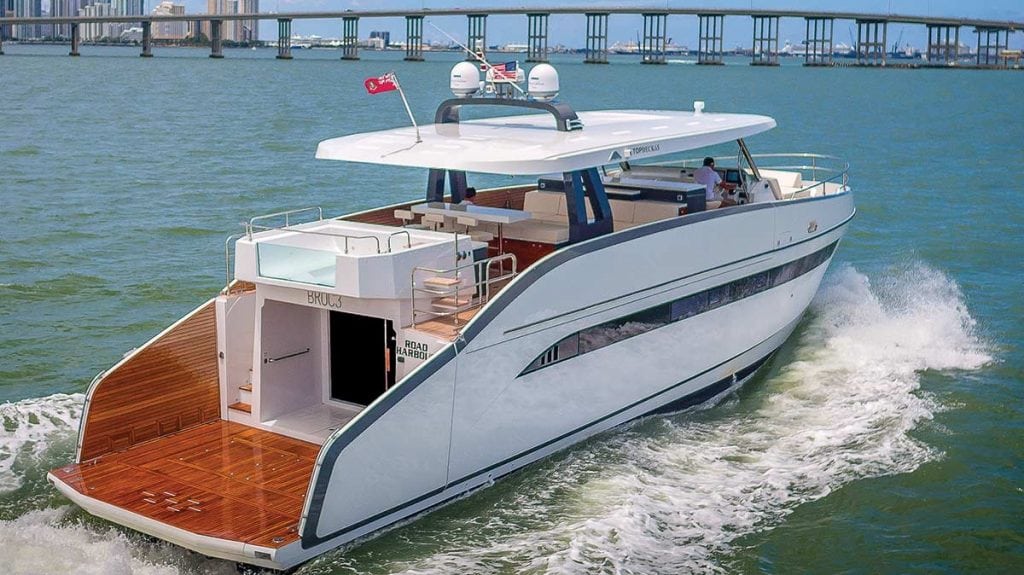Marine exhaust systems for inboard engines can be divided into two basic types—dry and wet exhausts. Dry exhaust systems have been around the longest but are now found primarily on commercial vessels or other specialty applications (high-performance craft, etc.). The basic job of a dry exhaust system is to carry hot exhaust gases overboard through a series of metal pipes. These pipes typically extend vertically from the engine and into a protective stack, where exhaust gases are then expelled above the decks and well away from the vessel.
Wet exhaust systems are more popular with recreational boats and are the focus of this article. They use water to cool the exhaust gases—and quiet engine noise—prior to discharging it overboard. Another benefit of this approach is the additional installation options it provides builders, as the cooled gases allow the system to now be routed horizontally to the exhaust outlet. Reduced temperatures also mean other materials (rubber, fiberglass, etc.) can be used in the system.
How they work
Water-cooled exhaust systems inject cooling water into the exhaust via an exhaust riser or mixing elbow, where the exhaust then pushes the water out of the exhaust outlet. Exhaust cooling water is typically provided by the engine’s raw water pump although a second pump may also be used (depending on the system).
Most installations will also include a muffler located between the riser and the discharge outlet. This not only reduces engine noise but also gives errant water entering the exhaust outlet a place to collect.
Maintenance tips
A great familiarization (and maintenance) strategy is to conduct an inspection of your exhaust system now and at regular intervals in the future, ideally as part of your fall layup and spring commissioning routine. Ideally, all materials used in your exhaust system should be labeled as to their suitability. Hoses, for example, should be labeled “marine wet exhaust” and be able to withstand heat, water weight, pressure, oil, and acids. Anything other than short hose runs (i.e. four times the inside diameter of the hose) should feature wire-reinforced hose, while all hose connections should be made to a ridged component (pipe, muffler, exhaust outlet, etc.). Hose to hose connections (i.e. a larger hose fitted over a smaller hose and then clamped) are not acceptable.
Vessels with a transom exit exhaust should also have an exhaust valve, which is simply a rubber flapper that attaches to the outside of the exhaust creating a one-way check valve to help prevent water from entering the exhaust (and possibly the engine).
During your exhaust system inspection check hoses for leaks, kinks, chafe, bulging (at hose clamps), and other signs of deterioration. Verify each hose is double clamped where possible (see sidebar) and that hose clamps are tight and free from corrosion. Keep a lookout for leaks at other system components as well, paying special attention to engine manifold and exhaust elbow joints (prime places for both leaks and corrosion). Heat-resistant lagging (insulation) covering dry or “hot” sections of the exhaust should also be removed periodically to allow a full inspection of the components underneath. Check the exhaust system with the engine both off and on as some leaks will only occur with the engine running.
Finally, finding and correcting exhaust leaks are also extremely important from a safety standpoint as these can introduce carbon monoxide (CO) into the vessel’s interior with deadly results.
Helpful Tips
Double hose clamp installation
While double hose clamps are often recommended for many cooling system hoses (particularly on seacocks), they should only be installed where there is sufficient length of barb/nipple available and hose end overlap to allow it. Hose clamps should be installed no closer than 1/4″ to the end of the hose and must fully engage the barb to prevent damage to the hose from occurring.
Engine manifold and exhaust riser checks
Engine manifolds and exhaust risers should be periodically removed, pressure tested and inspected for internal corrosion and clogging, any of which can lead to catastrophic engine failure. This should be considered routine maintenance particularly with systems operating in salt water. How often depends on vessel location (fresh or salt water) and the amount of use. However, at a minimum they should be removed and inspected every four to five years and more frequently for older units.
By Frank Lanier, Southern Boating Magazine
September, 2015

